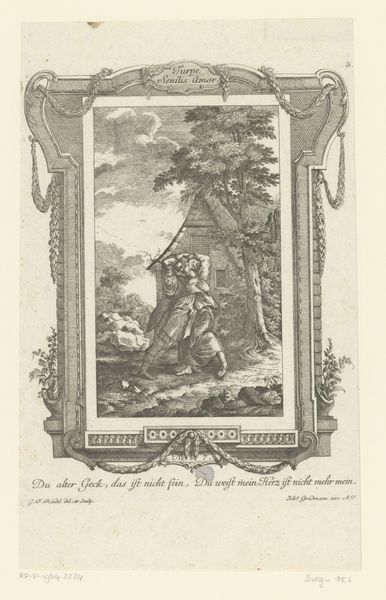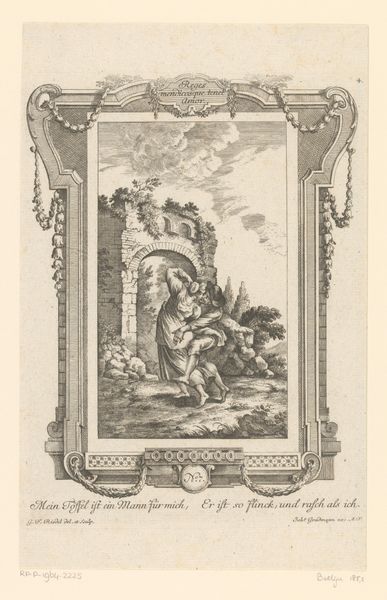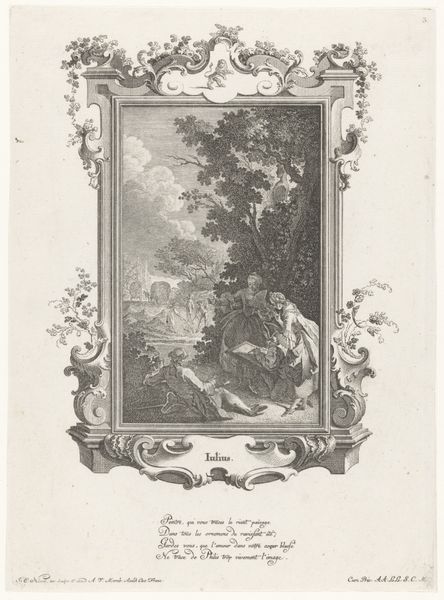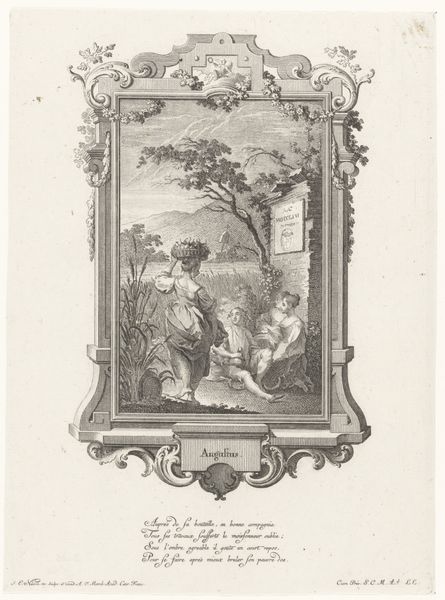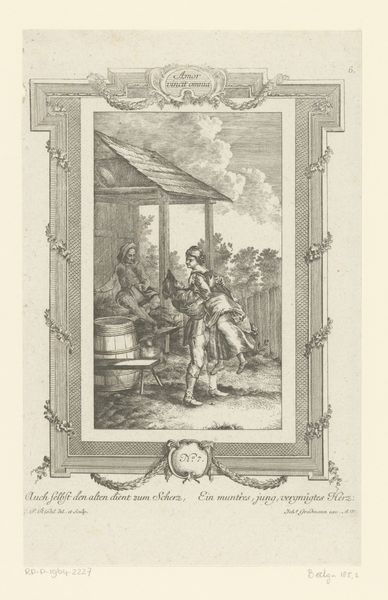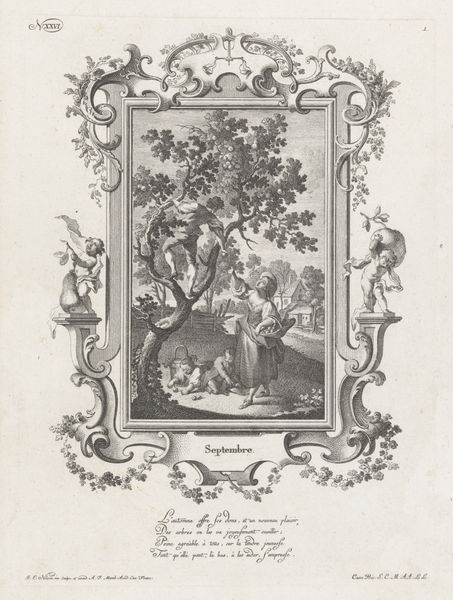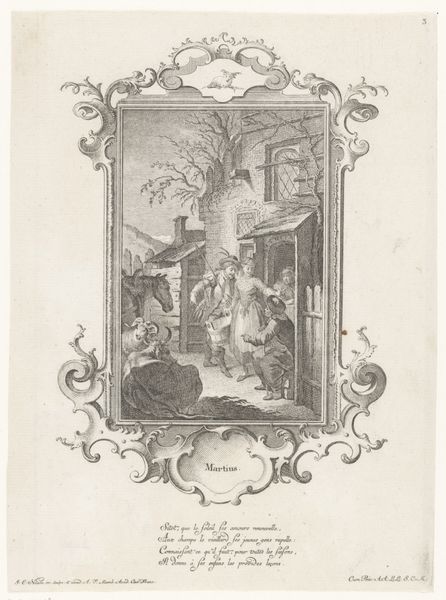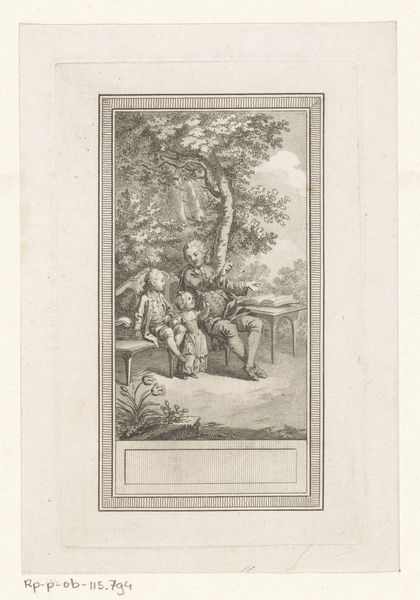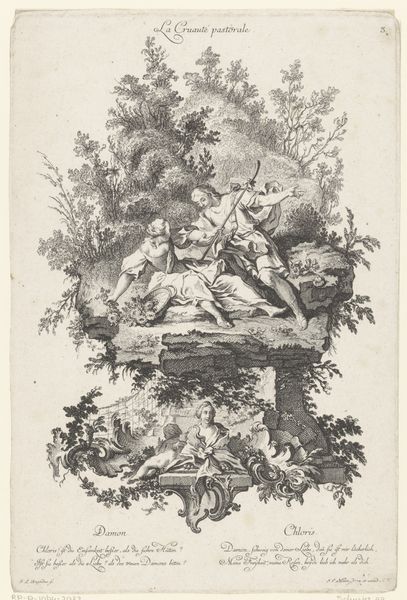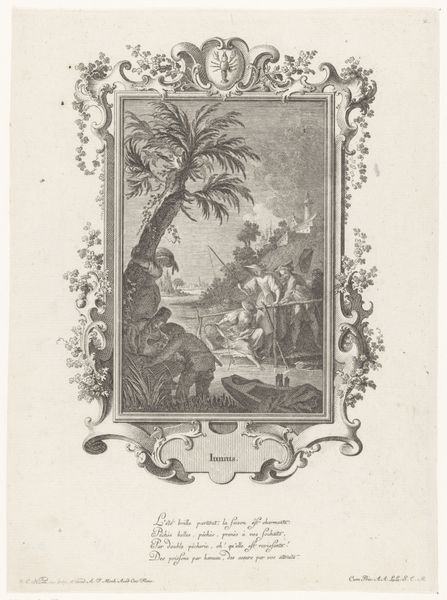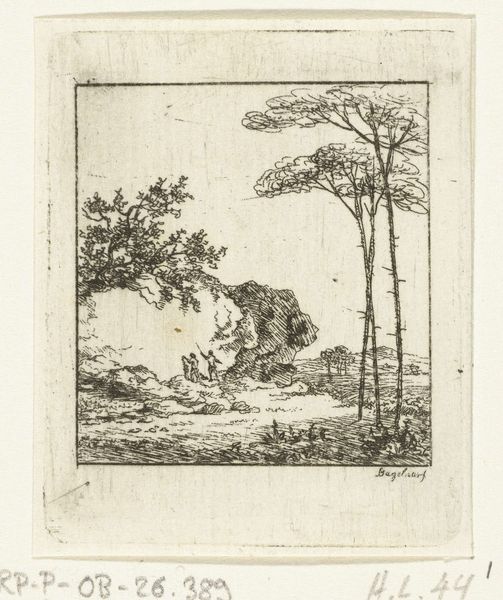
Dimensions: height 231 mm, width 175 mm
Copyright: Rijks Museum: Open Domain
Curator: This intimate scene arrests my attention immediately with its delicate rendering of affection. Editor: You're right. The graphic quality has a certain charm. What are we looking at precisely? Curator: This is "Verliefd stel kussend en strelend," or "Loving Couple Kissing and Caressing," by Gottlieb Friedrich Riedel, created around 1778 or 1779. It is currently held in the Rijksmuseum collection, and is a pen drawing transformed into a print using engraving techniques. Editor: Interesting! Engravings like this one speak volumes about print culture in the late 18th century. It's clear that printmaking processes had reached a level of sophistication. This wasn't just about reproducing images; it was about creating a desirable commodity for distribution. Who were the patrons, and how did these prints circulate within society? Curator: It invites a structural reading. Consider the composition: The embracing couple at the center, framed by that almost Rococo border. And beyond them, the secondary figure peeking out of the hut provides another perspective. The visual language seems deliberately theatrical, perhaps alluding to themes beyond the literal depiction of love. Editor: True. The setting feels purposefully rustic. Those discarded jugs, the unadorned building—all suggesting a simpler, more natural life, romanticizing the labor. What was Riedel trying to convey about work, life, and the representation of lower social classes through his technique? Curator: The use of line is key here. See how Riedel builds depth and form through meticulous hatching and cross-hatching? It creates a lovely sense of light and shadow, almost imbuing the scene with a dreamlike quality. Note how it's used for the sky... quite effective in rendering fluffy clouds with simple markings. Editor: Exactly. It reflects the growing romantic sensibilities, as shown by the intimate domestic sphere, set against the realities of production and consumption that underpinned this kind of image's creation. So much labour went into producing such images for wider distribution; there's such a paradox. Curator: I agree. Thinking about the drawing this way makes me appreciate even more the skill behind it! Editor: Indeed, it adds depth to a surface-level impression. These insights offer new points to research when we move on to another work.
Comments
No comments
Be the first to comment and join the conversation on the ultimate creative platform.
